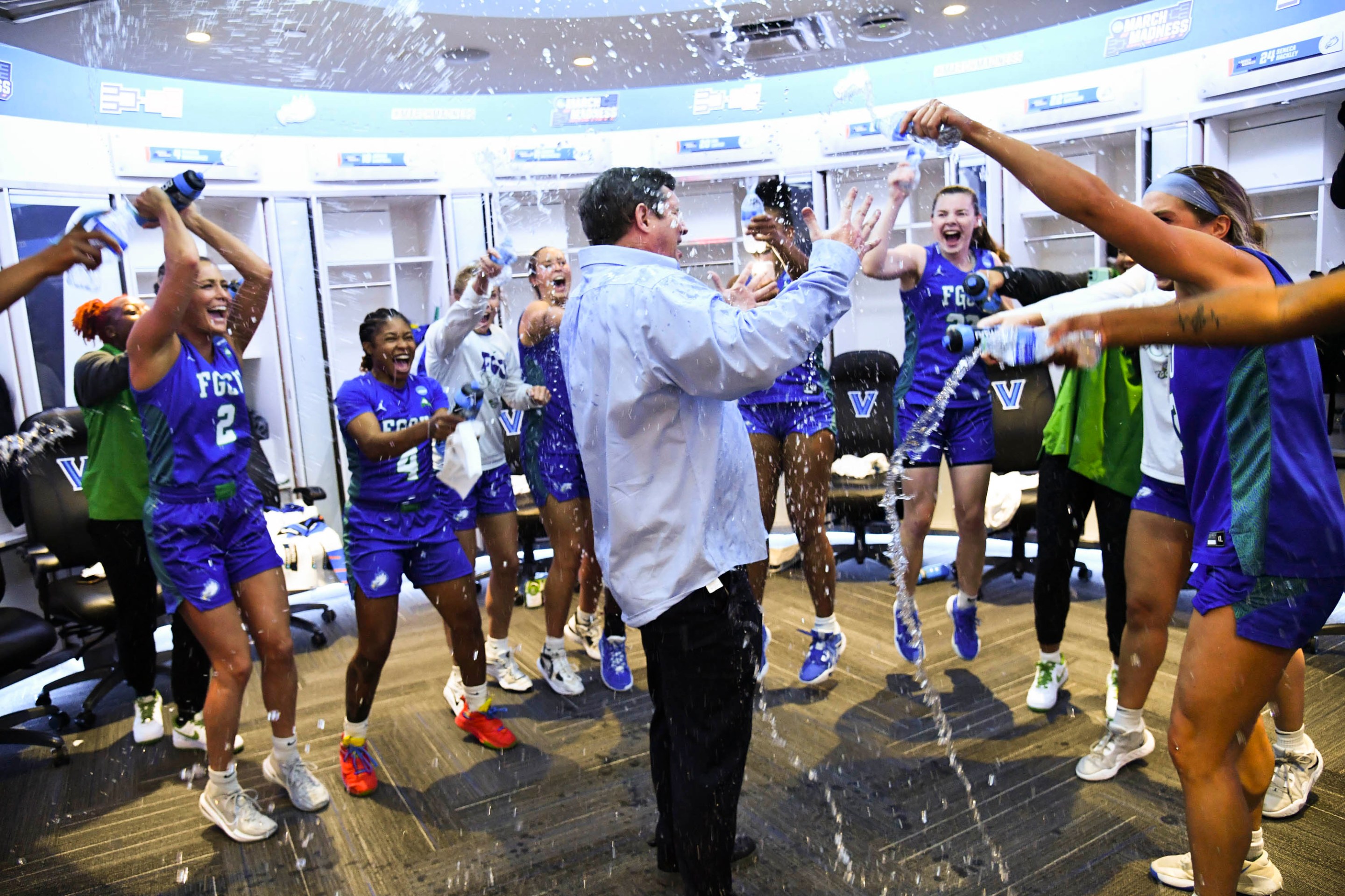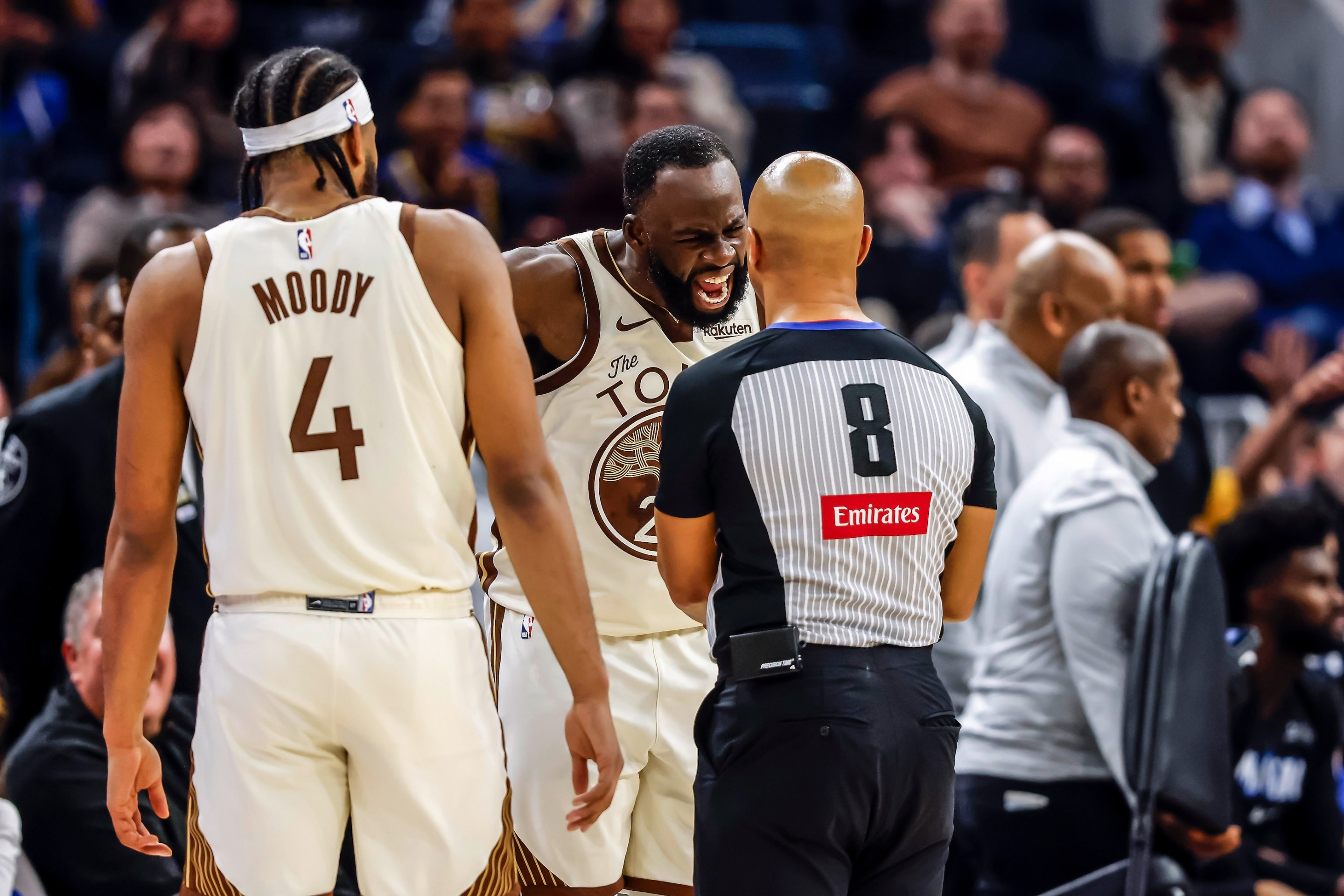Karl Smesko's Florida Gulf Coast University team had, for the second year in a row, defeated a five-seed as a 12-seed in the first round of the NCAA tournament when a reporter asked him what message this win would send to the country. An open invitation to gripe. But on Saturday, the head coach passed up the chance to play underdog. He refrained from the no one believed in us spiel. Instead he told the truth about a singular program every real hoop-knower respects: "Any time these brackets come out, a lot of people predict us to win," he said. "It's not like people are super surprised."
FGCU's win over Washington State could be called an upset in seed only. Even before the team's first-round win over Virginia Tech last year, the Eagles have been admired for their sneaky-great offense and their record of success. "I know there was a collective 'Oh, poor Washington State' that came up, because of the respect that people have for Karl and what he does," Washington State head coach Kamie Ethridge said after her team's loss, describing a common reaction to the seeding. What Karl does is win: Smesko is the only women's basketball coach in the school's history (FGCU started its D-II women's team in 2002 before joining the D-I Atlantic Sun conference in 2007) and his career winning percentage there (.844) puts him third among active women's coaches, behind only Geno Auriemma and Kim Mulkey. Last week, The Athletic published results from a survey of women's head coaches asked about the best Xs-and-Os minds in the sport. Tara VanDerveer ran away with voting, and there are some usual suspects on the list in Auriemma and Jeff Walz. But a couple votes went to Smesko. As one coach put it, "He wins 25, 30 games a year with players none of us have heard of."
How do the players no one has heard of do this? They swear an oath of allegiance to efficiency. Good Shots Only. Of the 1,936 shots FGCU has taken this year, a mere 26 have been twos outside the paint. 26! The Villanova team they'll face in the second round on Monday has attempted 422 such shots. The Eagles also lead Division I in three-point rate, and have for a few years running; just over 46 percent of the team's scoring attempts this season were from three-point range. For comparison, the median D-I three-point rate this year fell somewhere between 28 and 29 percent. Their team motto is "Raining Threes," like a brand identity counterpart to that men's team's "Dunk City." Smesko has said he's always been analytically inclined, even before basketball's three-point revolution. "I never understood punting on fourth-and-1," he told the women's basketball site The Next in January.
Theirs is a system coach, so the players adjust to the system. A January Sports Illustrated profile of the program opens with a transfer abandoning her midrange shot upon arrival. On a coaching podcast in 2020, Smesko expressed a philosophy of optimism, rooted in the idea that a good shooter can still be forged at age 19 or 20. "I think a lot of people would be surprised that a lot of the players we recruited weren't three-point shooters in high school," he said, stressing the value of basic reps. "We've had some of our best three-point shooters who never made a three in high school."
The system itself is also a kind of adaptation, a means of survival in a harsh recruiting climate. "Getting quality posts that are 6-foot-3, 6-foot-4—it’s really hard at a mid-major level. So we kind of went a different direction," he said on the podcast. The Cameron Brinks and Aliyah Bostons of the pool spoken for by blue bloods, Smesko focuses on what he calls "tweeners." These players—overlooked types—lack natural positions but are skilled and versatile enough to score in different ways or guard different spots. Few high major programs take someone like TK Morehouse seriously. The 5-foot-3 point guard actually started at a junior college before transferring to FGCU. But Morehouse can drive through taller defenders and get right to the rim. The Eagles' leading scorer now, she's seen her three-point percentage tick up every year, from 32 percent in her first season to 40 percent now.
Still, the Eagles shouldn't all be reduced to "system players," wholly reliant on scheme to succeed. In one recent case—that of Kierstan Bell, who transferred to FGCU from Ohio State in 2020—Smesko's focus on optimal shots helped a player round out her game. The statistics website Her Hoop Stats began awarding the Becky Hammon Mid-Major Player of the Year Award in 2020. Bell, the most efficient player in the country in her senior season at FGCU, won the award twice before being drafted by the Las Vegas Aces in the first round of last year's WNBA draft.
The sport's top-heavy reputation presents one more challenge: optimizing tournament seeding. Coaches of other mid-majors, most of whom qualify for the tournament via automatic bid, have described some of the strategy involved. Here's what Quinnipiac's Tricia Fabbri told Just Women's Sports about the team's Sweet 16 run in 2017:
“We basically broke it down by asking ourselves, ‘What seed do we need to be?’ We were being educated by Dr. Marilyn McNeil (former Monmouth Coach and chair of the NCAA Division I Women’s Basketball Committee) on what the committee room looks at,” Fabbri said.
“We were focused on what we had to do, and can you actually control the seed after you get the automatic qualifier? How do you control the seed and not just be happy you got there? We realized there was a strategy to it and that is what really made the difference.”
Fabbri applied that insight to scheduling a non-conference slate that would set the Bobcats up for a run at a 11 or 12 seed. That way, they wouldn’t have to play a team in the first round on their home court.
Smesko said Saturday that he sometimes struggles to find strong and willing non-conference opponents for the team, though that may become easier as the program strengthens its reputation in the tournament. (Both Stanford and Duke took Smesko up on invitations this year, and both beat FGCU in those games.)
When FGCU plays for a spot in the Sweet 16 on Monday, it will be in plenty of mid-major company. The first round also included a second 5-12 upset in the Toledo-Iowa State game, 10-seeded Princeton beating seven-seeded NC State on a game-winning three, South Dakota State beating USC in a 9-8 game, and USF beating Marquette in another 9-8 game. They all took a lot more midrange jumpers.







